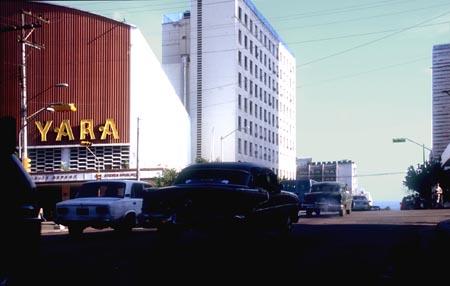Havana 2007

Professors: Prof. Roger Diener, Prof. Marcel Meili, Prof. Christian Schmid
Milica Topalovic, Christina Holona, Christian Mueller Inderbitzin
Exercise types: “P” (for diploma students) or “e” / “e+i” (for bachelor and master students)
Locations: Group work in Basel and Havana
Start: Tuesday, 20 March 2007, 10am, ETH Studio Basel, Spitalstrasse 8, 4056 Basel
Havana is the capital city of Cuba, one of the last remaining Socialist states after the collapse of the Eastern Bloc (besides the increasingly capitalist China and the dictatorship of the North Korea). The disappearance of Socialism has confronted Cuba with an exceptional and unique situation; its utopian character is further strengthened by its island position and hostile relations with the neighboring United States. Today, Cuba has close to 11 million inhabitants whose fate, since nearly half a century, is tightly linked to the stance of the revolutionary government under Fidel Castro.
However, for Cuba, the collapse of the Soviet Union and its allies not only meant political isolation: much more drastic were the economic consequences that emerged in the beginning of the 1990s, when the country’s essential trade relations disintegrated, together with its economy, which was based on the export of sugar. Over the following ten years, Cuba underwent a deep and wide-ranging crisis, referred to as the “periodo especial”. The country was forced to undertake a fundamental re-orientation, a political and economic about-face of sorts, which entailed a partial opening and the shift of focus toward tourism. By means of joint ventures with various international companies, the island was opened for mass tourism, which today constitutes one of the primary sources of income for the country. The introduction of a second currency, the “peso convertible”, which is coupled to the euro, was successful in bringing foreign capital to Cuba. The binary system with two currencies currently in operation has had far-reaching consequences: In everyday urban life, practices have emerged at various levels that are reminiscent of segregation or apartheid.
With almost 2.2 million inhabitants, Havana is to some extent the focus of these recent development processes. They are superimposed upon and transform the urban body of the city, which has already experienced similar dramatic periods of growth and change several times since its colonial origins. While the city already enjoyed a hegemonic position in Central America and accumulated considerable wealth during the colonial era (as is still easily discernable in the urban structure and architecture) due to its distinguished protected port and the location as a gate toward the Caribbean, from mid-19th century on it started to come to the attention of a rich American clientele, who begun to promote and develop Havana into a “Caribbean Vegas”, attracted by its exotic flair. This development resulted once again in a rich built heritage and a layer of urban extensions. With the Cuban revolution under Raoul and Fidel Castro, Che Guevara, and Camilo Cienfuegos in 1959, the decadent expansion was abruptly ceased. Due to a decentralized development policy, building activity in Havana came practically to a standstill. Even the most necessary maintenance work was not carried out, leaving the city to progressive deterioration. The permanent shortage of dwellings during these revolutionary decades led to the current situation where the increasing population re-appropriates the existing urban space and structure through varied and impressive improvisation techniques.

